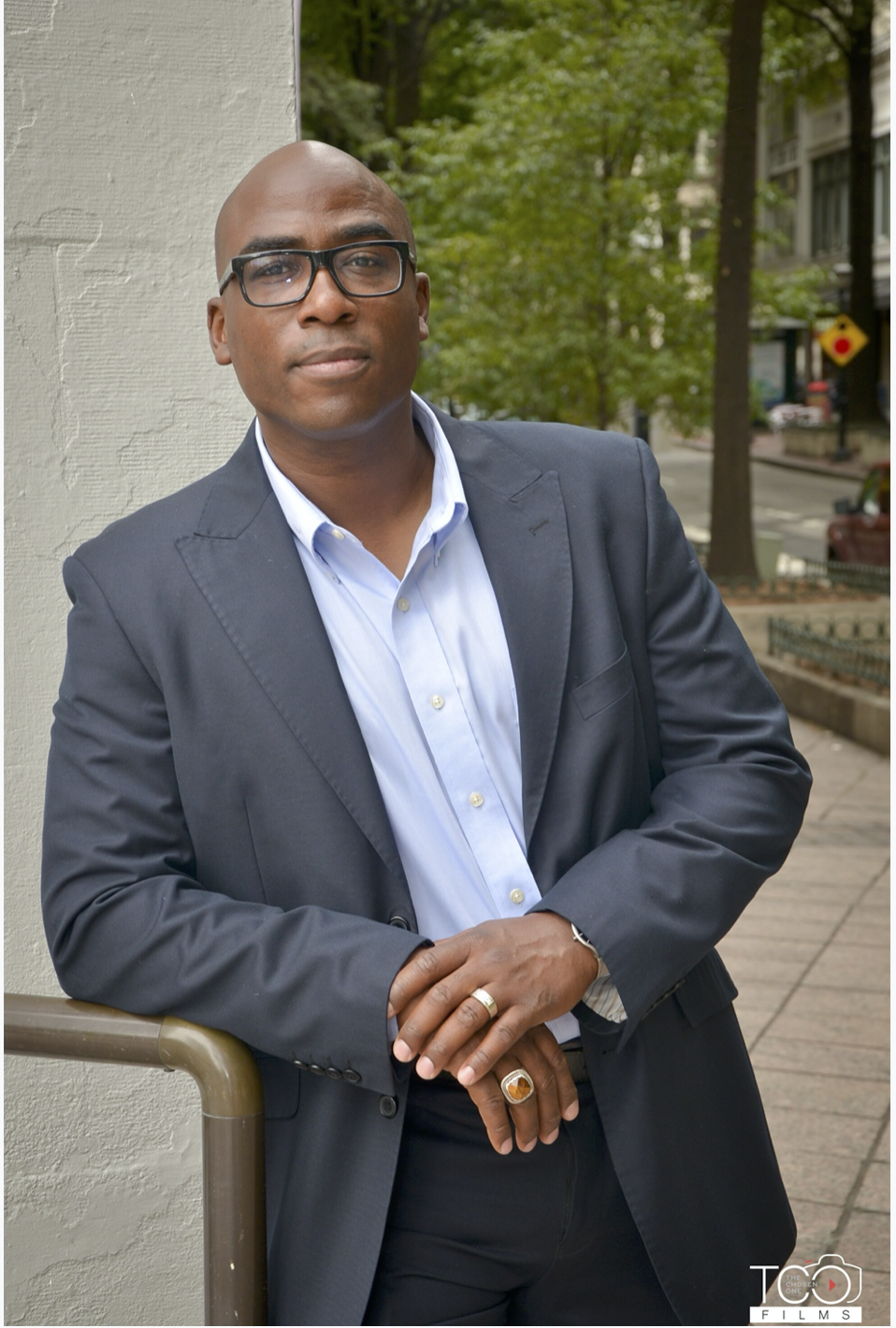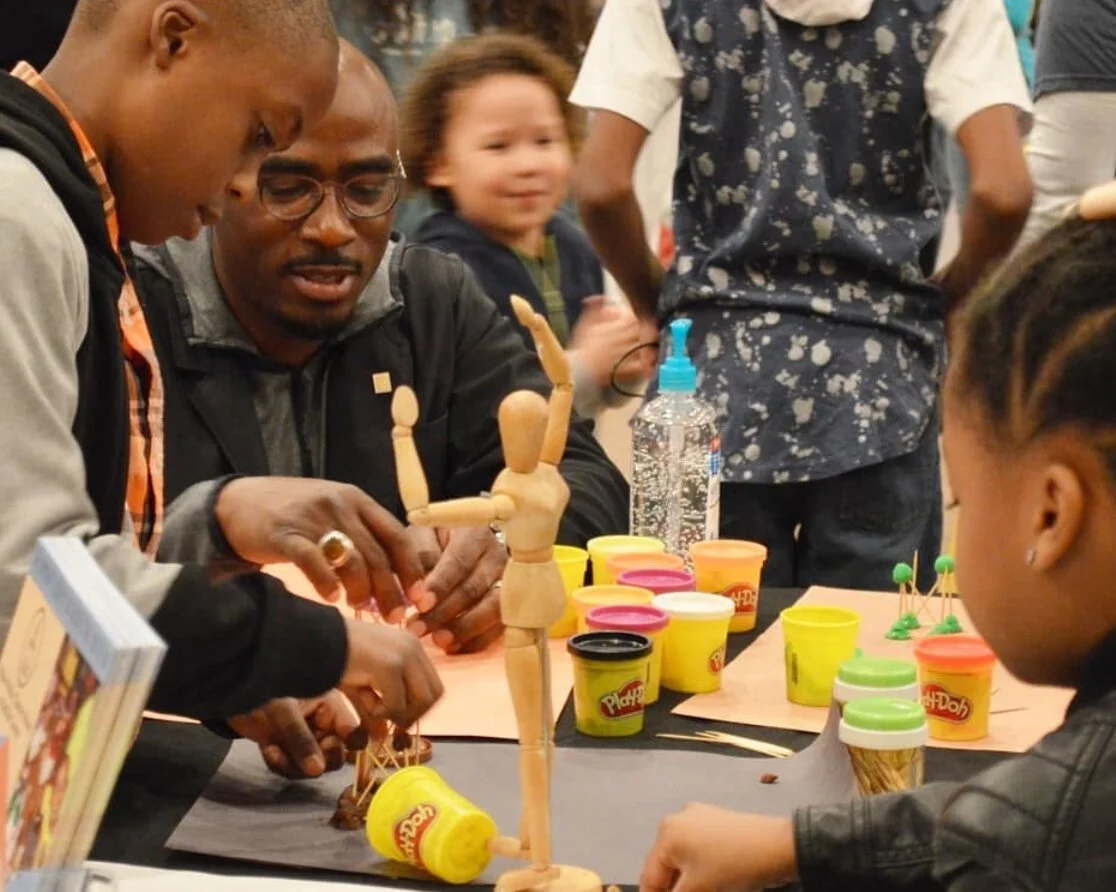AN INTERVIEW WITH NOMATLANTA'S "RISING STAR AWARD" WINNING ARCHITECT OF 2016 TARIQ ABDULLAH
TFAD: When did you know that you wanted to be an architect?
Tariq: When I was about two or three years old. My oldest sister and brother would draw me things to color each day as they did their homeschooling assignments. I would sit on the floor and color for hours while they did their work. My grandmother visited one day and noticed my talent and said that I would be an architect. For as long as I could remember I would then say I wanted to be an architect when I grew up. My oldest sister is an artist at heart but never pursued it as a career. She would paint in acrylics as a young girl. As I began to take to painting she discouraged me and encouraged me to stick with architecture. So its those early thoughts and conversations that stayed with me all these years.
TFAD: Who inspired you when you were thinking about going into business for yourself and starting Tarchitects?
Tariq: That’s a tricky one because I never really planned to go into business for myself. It was really out of necessity following the downturn in the economy in 2008. I think many people contributed in different ways though. My older brothers are all entrepreneurs. One is a flooring contractor. He really gave me the courage to make the move. I truly appreciate him for showing me I can start something, and with consistency and good planning I could be successful. I would rightfully credit my school of course. It’s that environment that afforded me the opportunities to consistently ask the pointed questions to guest speakers about their careers. In hindsight, It’s the conversations with business owners like David Adjaye and Will Witig that offered insight which I continue to benefit from even today. My alma mater the University of Detroit Mercy has a design center, The Detroit Collaborative Design Center (DCDC) which I worked at for most of my college career. It was there that I was exposed to the design process and how its applied to real projects. You know, the mechanics of just how in the world projects happen. That is an important part that most don’t get to experience for many years into their careers. I worked at Raine Hamilton’s Hamilton Anderson Associates (HAA) for a year following my formative years at DCDC and just before I started Tarchitects. The crazy thing is that, though I worked on some great projects, and had a chance to lead production teams on multi-million dollar projects for the first time at HAA —The final 3 months of my time there, I lead the organization of the firms project document archives. The physical archives. This had very little to do with design documents, and a great deal to do with the “business” of architecture. It was this seemingly odd, and not so sexy task that encouraged me possibly the most. Can you imagine, to be tasked with understanding the documents of project that span decades, and to organize thousands of documents related to various aspects of different projects. That’s a wealth of knowledge that I’m grateful to have been exposed to. That was probably just a little bit of luck.
TFAD: What is your perspective on the “Art” vs the “Science” of Architecture?
Tariq: I would argue that its not always easy to separate the two. Even in the purely aesthetic decisions that we architects make on a daily bases, there are tons of scientific, and even social-scientific considerations involved. Just “decent” designers have no clue what I’m talking about. But gratefully, It’s often the not so obvious design patterns which brings the greater success to project, vs the general things that some think they can do with little to no training in the art or sciences of this profession.
TFAD: How would you identify the ideal client?
Tariq: Smart people. Those whom enjoy the design process. Project owners whom understand their program. They have a good handle of what they want in a building. They know what they are looking for, or they simply are smart enough to acknowledge that they will benefit most by having a professional architect lead them through a complete design process that elevates even what they had in mind, in a thoughtful and resourceful way. If at that point they reach out and we accept them as a client, they will learn a lot along the way as they see the design unfold and evolved into what will ultimately exceed their expectations. Designing and engineering of buildings is what we do. So we appreciate a well prepared client. If that isn’t the case then we don’t mind doing a bit of Architecture 101 with the client to bring them up to speed. That’s very important for clients that may be doing this for their first time. It helps to responsibly set their expectations.
TFAD: Of all architects in Atlanta, you certainly stand out when it comes to showing kids that they too can successfully pursue a career in architecture. What makes that important for you?
Tariq: Well, though I’ve wanted to become an architect since the age of two, It wasn’t until I was in college that I had the opportunity to pursue it, or even be exposed to the practice or study of architecture on any real level. I truly believe that exposure means the most when children are looking for their passion. For me it happened very early. But the exposure part came much later. That had a lot to do with my environment. I don’t want the same obstacles to exist for other children. This is what TCAAD is about. Meaningful exposure to architecture and design thinking as ways to inhabit one’s community as a problem solving engineer. Partnering with communities we identify problems. We scale down of these problems to a manageable size for K-12 students. Students then work on these projects processed in a deliberate way to cover all standards and state required learning objectives per grade. This is why the scaling is so important. But now you have a community of children engaging in meaningful project based learning inside their own communities while in the process of designing the future they what to see for their communities. This is profound! Following their K-12 experience at TCAAD they will enter the workforce prepared to address issues of vital concern with an advanced level of creative critical thinking skills. That’s what we need more of as a nation. If they go into architecture great. If not, lets just hope we’ve left the students with a greater appreciation for the art and science of what we do as architects. They will then take those transferable skills and make a positive impact somewhere else.
TFAD: What is most rewarding in all of what you do?
Tariq: Helping others. It’s the helping others achieve their goals that I love most. I’m grateful to be able to do that with the design firm, TCAAD and the Foundation.
TFAD: What is your favorite quote?
Tariq: “Time will pass, and with the proper energy I can achieve anything.”
TFAD: Who said that?
Tariq: Oh, That’s one of my own.




